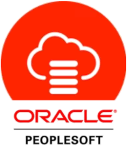PeopleSoft on the Oracle Cloud – what does it mean? March 14, 2016
Posted by Duncan in Cloud, Infrastructure, TW.trackback
There have been a few announcements over the last couple of weeks about the Oracle Public Cloud. But what does it actually mean for the PeopleSoft community?
What is Oracle Public Cloud?
The Oracle Public Cloud is Oracle’s competitor to the Infrastructure as a Service (IaaS) providers that have swiftly risen to create a whole industry that didn’t exist 10 years ago. Because they’re the market leader (by far) everyone automatically thinks of Amazon, however Microsoft Azure, Google Compute and Rackspace are also players in the market.
As PeopleSoft adopts more SaaS-like features (new UI, incremental updates etc) companies have started to move their infrastructure from their own data-centres to the cloud. For many companies this makes good business sense, however rather than have customers going to a 3rd party provider Oracle would rather provide the cloud service themselves. Obviously this is better for Oracle, however the customer benefits too (retaining a single vendor, and Oracle can potentially optimise their applications for their own cloud better than they can for Cloud infrastructure belonging to other vendors). There may also be cost savings for the customer, however I haven’t looked at pricing yet.
Doesn’t Oracle already do Hosting?
Yes, Oracle has long had a service that will host infrastructure on your behalf – Oracle On Demand. This is more of an older-style ASP (Application Service Provider). You’re more likely to be on physical hardware without much in the way of flexibility/scalability and tied into a long-term hosting contract, so the Oracle Public Cloud is a major step forwards in a number of ways.
How will Oracle Public Cloud be better?
I attended a couple of workshops on this last week and it looks very promising. It has all the attributes required for it to be properly classed as ‘Cloud’:
- subscription pricing,
- elasticity of resources (so you can scale instances according to demand),
- resilience of data centres (so, if you’re based in the UK you might be looking at the Slough data centre, however there are two ‘availability zones’ within Slough so if one gets hit by an outage you’ll still be able to connect to the other one)
Interestingly, it also includes several ‘Database as a Service’ offerings, each offering increasing levels of performance. With this model you don’t need to worry about the virtual machine, operation system etc that your database runs on, you receive access to a database and leave the maintenance to others. You would still need to have your other tiers on the IaaS offerings.
This opens up the possibility of multiple tiers of Cloud service:
- Just the Infrastructure (client does all the database and application admin)
- DBaaS (client has other tiers on IaaS, but does not do DB admin)
- Full Cloud solution (uses Oracle Cloud and a partner to do all administration)
How can I best take advantage?
The best time to move is probably at the same time as an upgrade. Upgrades normally come with a change in some of the hardware (due to the supported platforms changing) so moving to the cloud allows the hardware to change without any up-front costs.
PeopleSoft 9.2 and the more recent PeopleTools versions have a lot of features that were built for the Cloud, so by running it on-premises you’re not realising the full capabilities of your investment.
We’d recommend you try using the Cloud for your Dev and Test instances first, before leaping in with Production at a later date. Oracle have tools to help you migrate on-premises instances to their Cloud. (At this point – Mar 2016 – we have not tested these tools.)
What will the challenges be?
The first challenge is “how do I try it?”. This is pretty straightforward, in that you get a partner to demonstrate to you, or can get yourself an Oracle Public Cloud account and then provision a PeopleSoft instance using one of the PUM images as a demo. This would work fine to look at new functionality, or as a conference room pilot.
One of the biggest challenges is likely to be security – not the security of Oracle’s cloud, but securing your PeopleSoft instances which previously might have been only available within your corporate LAN. If you need assistance with this speak to a partner with experience using Oracle Public Cloud.